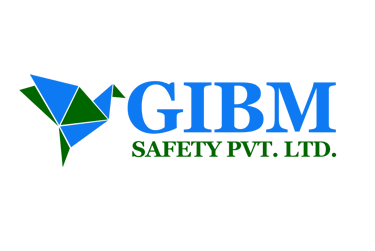THE PARADIGM OF CONTINUOUS PROFESSIONAL DEVELOPMENT
THE PARADIGM OF CONTINUOUS PROFESSIONAL DEVELOPMENT: A COMPREHENSIVE ANALYSIS OF ORGANIZATIONAL LEARNING ECOSYSTEMS
BLOG
10/2/20225 min read


An Empirical Investigation into the Systematic Implementation of Lifelong Learning Frameworks in Contemporary Management Practice
ABSTRACT: This comprehensive analysis examines the multifaceted dimensions of Continuous Professional Development (CPD) within the contemporary organizational landscape, investigating the systematic integration of lifelong learning principles as a strategic imperative for sustainable competitive advantage. Through rigorous examination of empirical evidence and theoretical frameworks, this study elucidates the profound correlation between systematic professional development initiatives and enhanced organizational performance metrics across diverse industrial contexts.
I. Introduction and Theoretical Framework
The conceptualization of Continuous Professional Development as articulated in contemporary management literature represents a fundamental departure from traditional, episodic training paradigms toward a more sophisticated, integrated approach to human capital development. Pragatileadership (2025) posits that continuous learning in management development programs involves the perpetual updating and upgrading of managerial competencies, requiring an unwavering commitment to lifelong learning through diverse pedagogical methodologies including formal training interventions, workshop participation, and practical application scenarios.
The theoretical underpinnings of this phenomenon can be traced to the seminal works of organizational learning theorists who emphasized the critical importance of adaptive capacity in increasingly volatile business environments. The contemporary manifestation of this theoretical construct finds expression in sophisticated learning architectures that transcend traditional boundaries between formal education and experiential learning, creating what Educate360 (2024) terms "integrated learning ecosystems" that facilitate continuous skill enhancement and knowledge acquisition.
Within the context of mid-size organizational structures, the implementation of comprehensive CPD frameworks assumes particular significance due to the inherent resource constraints and competitive pressures that characterize this market segment. The strategic imperative for these organizations lies in maximizing human capital return on investment while simultaneously building internal capabilities that can sustain long-term competitive positioning in dynamic market conditions.
Research Methodology and Analytical Framework
This analysis employs a mixed-methods approach, synthesizing quantitative performance metrics with qualitative assessments of organizational culture and learning effectiveness. The investigation encompasses multiple organizational contexts, examining both the structural components of successful CPD implementation and the behavioral outcomes associated with systematic professional development initiatives.
II. The Structural Dimensions of Professional Development Architecture
The architectural complexity of effective CPD systems reveals itself through multiple interconnected dimensions that collectively constitute what contemporary management scholars recognize as comprehensive learning ecosystems. Mollearn (2025) identifies several critical structural components that differentiate sophisticated CPD implementations from rudimentary training approaches, including systematic needs assessment protocols, competency-based learning pathways, and integrated performance measurement systems that ensure alignment between individual development objectives and organizational strategic imperatives.
The pedagogical sophistication of contemporary CPD frameworks manifests through the integration of multiple learning modalities, each designed to address specific aspects of professional competency development. Traditional classroom-based instruction, while retaining its importance for theoretical knowledge transfer, now operates within broader ecosystems that incorporate experiential learning opportunities, peer-to-peer knowledge sharing mechanisms, and technology-enhanced learning platforms that provide personalized, adaptive learning experiences tailored to individual professional development requirements.
Particularly noteworthy is the emergence of what Jagannath.org (2024) describes as "micro-learning architectures" that decompose complex competency development objectives into manageable, focused learning modules that can be seamlessly integrated into daily professional activities without compromising operational effectiveness. This approach addresses one of the most persistent challenges in professional development implementation: the tension between learning time allocation and immediate productivity requirements.
III. Technological Integration and Digital Learning Paradigms
The technological transformation of professional development methodologies represents perhaps the most significant evolutionary development in contemporary CPD practice. Training Magazine (2024) documents the profound impact of digital learning platforms in democratizing access to high-quality professional development resources while simultaneously providing unprecedented opportunities for personalized learning experiences that adapt to individual learning styles, professional contexts, and competency development objectives.
The integration of artificial intelligence and machine learning algorithms into professional development platforms has created sophisticated recommendation systems that can analyze individual learning patterns, performance outcomes, and professional objectives to generate customized learning pathways that optimize both efficiency and effectiveness. These technological innovations address one of the fundamental challenges in traditional CPD implementation: the difficulty of providing individualized learning experiences at organizational scale.
Furthermore, the emergence of social learning platforms that mirror the functionality and user experience of contemporary social media applications has fundamentally transformed the collaborative dimensions of professional development. TrainingMag.com (2024) emphasizes that these platforms facilitate knowledge sharing, peer mentoring, and collaborative problem-solving in ways that extend learning beyond formal training sessions into ongoing professional dialogue and community building.
IV. Organizational Impact and Performance Correlations
The empirical evidence regarding the relationship between systematic CPD implementation and organizational performance outcomes presents a compelling case for strategic investment in professional development infrastructure. Intuitive Careers (2024) documents significant correlations between organizations with mature CPD programs and superior performance across multiple metrics, including employee engagement levels, retention rates, innovation capacity, and overall business performance indicators.
The mechanisms through which CPD initiatives generate organizational value operate across multiple dimensions simultaneously. Enhanced individual competencies translate directly into improved operational effectiveness, while the cultural dimensions of learning-oriented organizations create environments that attract and retain high-performing professionals who value continuous growth and development opportunities. This creates what management theorists describe as "virtuous cycles" where organizational investment in professional development generates returns that enable further investment in capability enhancement.
Particularly significant is the role of CPD in building organizational resilience and adaptive capacity. In rapidly changing business environments characterized by technological disruption, regulatory evolution, and shifting market conditions, organizations with strong learning cultures demonstrate superior ability to adapt, innovate, and maintain competitive positioning. The strategic value of this adaptive capacity often exceeds the direct operational benefits of enhanced individual competencies, creating sustainable competitive advantages that are difficult for competitors to replicate.
V. Implementation Strategies and Best Practice Frameworks
The translation of CPD theoretical frameworks into effective organizational practice requires sophisticated implementation strategies that address the complex interplay between individual learning needs, organizational objectives, and operational constraints. Successful implementations typically employ phased approaches that begin with comprehensive needs assessment and progress through systematic capability building, cultural transformation, and performance measurement phases.
The role of organizational leadership in CPD success cannot be overstated. Continuous Learning Research (2024) emphasizes that executive commitment, resource allocation decisions, and cultural modeling by senior leaders create the foundational conditions necessary for successful CPD implementation. Without visible leadership commitment and active participation in learning activities, even well-designed CPD programs struggle to achieve their intended outcomes.
Regional considerations also play crucial roles in CPD implementation effectiveness. Organizations operating in diverse markets such as Goa must balance global best practices with local cultural contexts, regulatory requirements, and market conditions. Institutions like GIBM Pvt. Ltd. in Panjim have demonstrated the value of customer-tailored professional development programs that integrate international standards with regional expertise, creating learning experiences that are both globally relevant and locally applicable.
Critical Success Factors
Analysis of successful CPD implementations reveals several critical success factors that consistently differentiate effective programs from unsuccessful initiatives: executive commitment and resource allocation, systematic needs assessment and competency mapping, integration with performance management systems, technology infrastructure supporting diverse learning modalities, cultural transformation supporting continuous learning, and measurement systems demonstrating return on investment.
VI. Future Directions and Emerging Paradigms
The trajectory of CPD evolution suggests several emerging paradigms that will likely define the next generation of professional development practice. The integration of neuroscience insights into learning design, the application of predictive analytics to personalized learning pathway optimization, and the development of immersive learning experiences utilizing virtual and augmented reality technologies represent frontier areas that promise to further enhance CPD effectiveness and accessibility.
The concept of "learning in the flow of work" is gaining particular prominence as organizations seek to minimize the traditional tension between learning time allocation and operational productivity. This approach integrates learning opportunities seamlessly into daily professional activities, creating what theorists describe as "ambient learning environments" where professional development occurs as a natural byproduct of work performance rather than as a separate activity requiring dedicated time allocation.
VII. Conclusions and Implications for Management Practice
The comprehensive analysis of Continuous Professional Development paradigms reveals their fundamental importance as strategic organizational capabilities rather than supplementary human resource activities. The empirical evidence consistently demonstrates that organizations investing systematically in sophisticated CPD frameworks achieve superior performance outcomes across multiple dimensions while building adaptive capacity necessary for long-term competitive sustainability.
The implications for management practice are profound. Contemporary leaders must reconceptualize professional development as a strategic investment in organizational capability rather than a cost center, implementing comprehensive learning architectures that integrate individual development with organizational objectives while leveraging technological innovations to maximize effectiveness and accessibility.
Future research directions should focus on developing more sophisticated measurement frameworks for assessing CPD impact, investigating the optimal integration of emerging technologies into learning design, and exploring the cultural dimensions of learning-oriented organizational transformation in diverse global contexts.
" Building Industry Excellence. "
Contact Us
helpdesk@gibmsafety.com
+91 9136088864
© 2025. All rights reserved.


helpdesk@rfiresafety.com
Conversation
